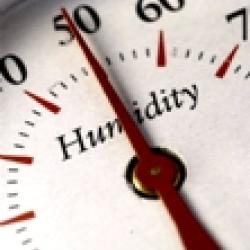Source Institutions
Source Institutions
Add to list Go to activity
Activity link broken? See if it's at the internet archive

In this activity, learners explore sensors and focus specifically on how to measure humidity using a sensor. Learners work in teams of "engineers" to design and build their own "hygrometer" out of everyday items. Learners plan a design, and then build and test a system to measure changes in humidity. Learners evaluate the systems of all teams, review their results, and present findings to the group.
- Under 5 minutes
- 1 to 2 hours
- $10 - $20 per group of students
- Ages 8 - 18
- Activity, Experiment/Lab Activity, Lesson/Lesson Plan
- English
Quick Guide
Materials List (per group of students)
- Student Resource Sheets
- Student Worksheets
- Water spray bottle with mist option if possible
- Water absorbing materials such as cotton balls, tissue paper, cardboard, litmus paper, writing paper
- Wood blocks
- Plastic or paper cups
- Straws
- Cardboard
- Cotton balls
- Aluminum foil
- Rubber bands
- Tape
- Toothpicks
- Paper towels
- Wire
Subjects
-
Earth and Space Science
-
Earth Processes
- Weather and Climate
-
Earth Structure
- Atmosphere
-
Earth Processes
-
Engineering and Technology
-
Engineering
- Metallurgy and Materials Engineering
- Technology
-
Engineering
-
Mathematics
-
Data Analysis and Probability
- Data Analysis
- Data Collection
- Measurement
-
Data Analysis and Probability
-
Physical Sciences
- States of Matter
-
The Nature of Science
-
The Scientific Process
- Conducting Investigations
- Gathering Data
- Formulating Explanations
- Communicating Results
-
The Scientific Process
-
The Nature of Technology
-
Technology and Society
- Technology and the Environment
-
The Design Process
- Research and Development
- Invention and Innovation
- Problem Solving
- Troubleshooting and Maintenance
-
Technology and Society
Informal Categories
- Nature and Environment
Audience
To use this activity, learners need to:
- see
- read
- touch
Learning styles supported:
- Involves teamwork and communication skills
- Involves hands-on or lab activities
Other
Components that are part of this resource:
Includes alignment to state and/or national standards:
This resource is part of:
Access Rights:
- Free access
By:
Rights:
- All rights reserved, IEEE,
